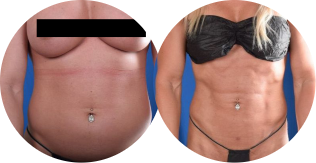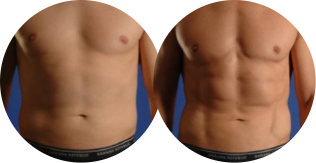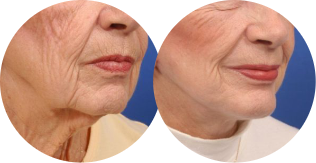Art & LipoSculpture
Offered at our convenient location in Denver
Art’s Influence On Liposuction / LipoSculpture
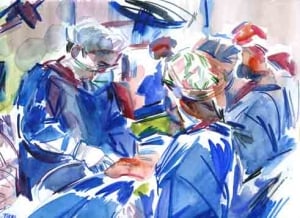
With traditional liposuction techniques, treating the deep adipose layer and avoiding the superficial and subdermal adipose layers, liposculpting surgeons were significantly limited in what they could do to change the shape of the human figure.
Starting in 2002, swift changes in technology led to a rapid transformation in liposuction/liposculpting techniques (facilitated by innovations in liposuction technology).
This allowed surgeons to work in the superficial adipose layer, both effectively and safely.
With these increased abilities to work more extensively within the adipose layers, came the requirement, for surgeons to embark on the study of “Artistic Anatomy”. Surgeons must study the human body, it’s anatomy and form, not as surgeons or physicians, but as sculptors and painters.
Most Surgeons Have No Formal Training In Artistic Anatomy
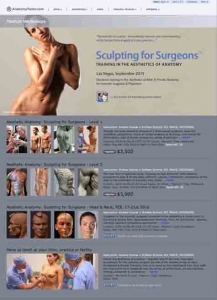
The most surprising thing for a prospective plastic surgery patient, is that there is absolutely no formal training in “Artistic Anatomy” for plastic surgeons.
Principles such as form, fullness, highlight, half-light, etc. needs to be learned to provide patients with optimum results.
Medical School Gross Anatomy Lacks “Normal” Human Appearance
For most medical students, the experience with human anatomy as a subject at least begins and ends with one semester of gross anatomy during the first year of medical school. Gross anatomy however, teaches us almost nothing about the outward appearance of the human body.
Cadavers by their very nature, change in appearance from almost the minute of death. Add in embalmment and preservation of the cadaver, before its introduction to it’s medical student, and you have the perfect formula for how to avoid understanding how tissues, namely muscles, bone , fat and skin, affect “Normal” outward human appearance.
Standard Medical Training Has Failed To Keep Up With Innovations

The isn’t a criticism of the medical training process as much as it’s an example of a system that has failed to keep up with what is becoming possible through advances in technology and techniques within the field of plastic surgery.
Today we are on the cusp of being able to grow organs, parts of organs and in plastic surgery sculpt and shape the human being made possible by such techniques as VASER Hi Def.
Necessity Creates Demand
Simply said the “Necessity” for advancements in our training, has come as a result of what is now possible. It is going to become increasingly important for plastic and cosmetic surgeons to be trained in the “Arts,” specifically in “Artistic Anatomy.” No sculptors would consider themselves knowledgeable enough to sculpt the human form without formal training in artistic anatomy.
Plastic Surgeons Need To Seek Artistic Anatomy Training
Plastic and cosmetic surgeons, and especially those that specialize in body sculpting, should consider their training incomplete, until they have pursued and accomplished some formal training in artistic anatomy or anatomy for the artist.
Here’s why!
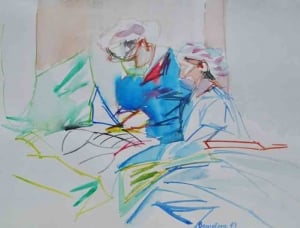
The term “Form” has been defined as the three-dimensional shape an object takes up in space. Almost all “Forms” in the body are “Convex” meaning they are outwardly round.
Therefore, a human “form” is a bulge, a convexity, on the three-dimensional surface of the body. The entire surface of the body is entirely composed of many “Convex’ forms, all neatly fitted together. This succession of individual convex curves, lining up the silhouette of the figure, create the contour of the body. The outward form of body, or the many interconnected forms of the body are created and influenced by the massive underlying anatomic structures that support the more superficially appearing form.
This “Form” starting with the outward appearance of skin and fat, is a reflection of the shape and projection of underlying muscular and at times skeletal anatomy. So one must conclude, that, the better one understands how this anatomy influences outward appearance, specifically, how underlying fat, muscular, and skeletal anatomy “Causes” outward appearance, the better one, if they are surgically trying to influence outward appearance, can actually influence outward appearance.
Muscular Definition
As a patient, it is important to understand the “Muscular Definition” is a result of what happens “Between” the body’s “Forms”.
Definition Is Influenced by 3 Variables:
- The size of the muscle mass on each side of the “Between” space.
- The amount of subcutaneous fat in the “In Between” space between the individual muscle masses.
- The amount of muscle contracture of the two muscles that define the sides of the “Between” space.
If a surgeon is going to manipulate the fat in the “”In-Between” space, doesn’t it stand to reason that a knowledge of that anatomy might benefit you, as the patient.
The quality of the patient’s result is then influenced by all of the subtle shape differences each individuals’ muscles and skeletal anatomy have, the spaces ‘In Between” these structures, the ability of the sculpting surgeon to palpate and observe this anatomy, and the understanding the sculpting surgeon has of the individual’s fat anatomy overlying the deeper musculoskeletal anatomy.
Finally, the result is determined by how well the sculpting surgeon can work and shape this subcutaneous or fat anatomy, to accentuate or complement the patient’s underlying musculoskeletal anatomy.
Tailored Anatomy
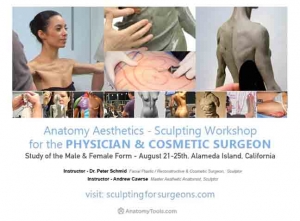
One key term that is restated over and over is “Individual”. Each of us have our own unique muscle and skeletal anatomy and for that matter, unique fat anatomy as well. This anatomy is as unique as our fingerprint. It is the skill that the body contouring surgeon has in identifying your unique anatomy that determines the probability of a successful body contouring result.
Sculptors use models to achieve individual, unique pieces of art. They don’t put the same piece of art out for all of the different models they use. It therefore stands to reason that an individual’s final liposculpted result should be as unique as their anatomy and their human appearance is. It was this increasing need for the teaching of “Artistic Anatomy” that drove Dr. Millard to lobby successfully for a formal course that trains plastic and cosmetic surgeons in this subject. The result was the development of the “Sculpting for Surgeons” a course taught by Peter Schmidt and Andrew Cawrse.
